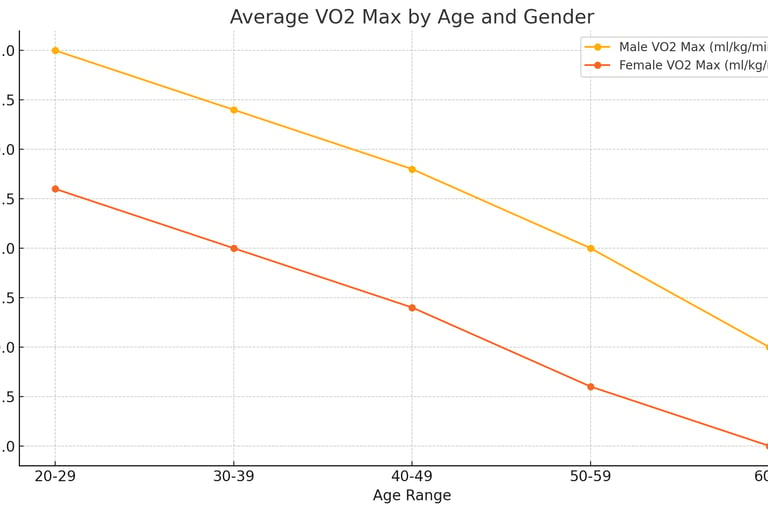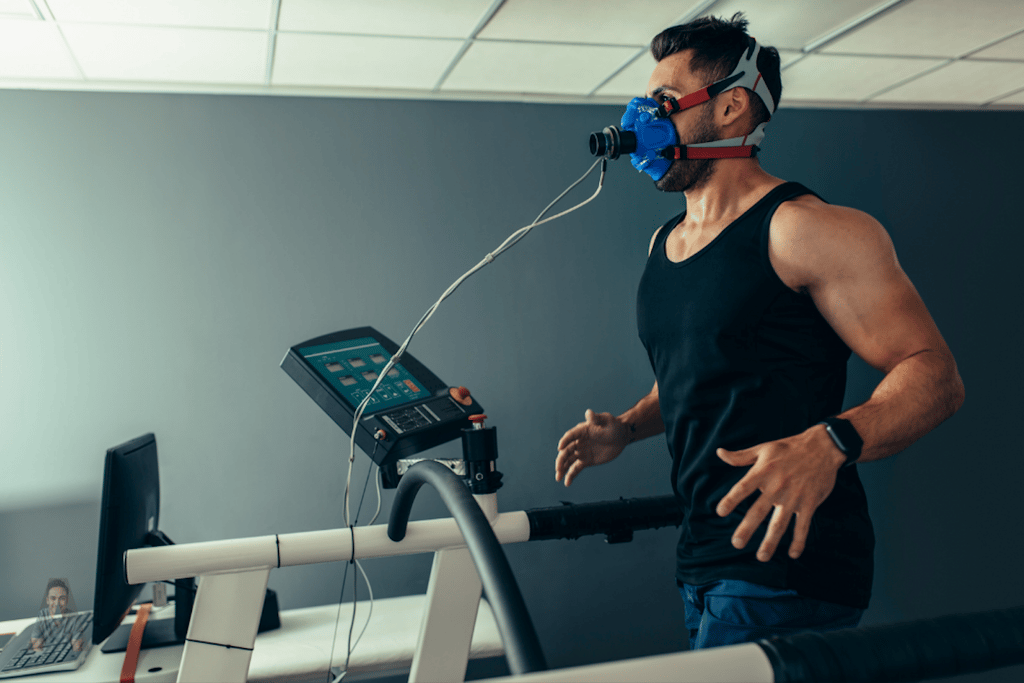VO₂ Max: The Unsung Hero of Longevity
In this evidence-based guide, Dr. Ari Saheb Kashaf breaks down the science behind VO₂ max and explains why it’s one of the most powerful and underrated predictors of longevity and healthspan. Learn what VO₂ max is, why it matters, how it changes with age, and most importantly—how you can improve it at any stage of life. Whether you’re a biohacker, athlete, or just someone committed to aging well, this blog gives you practical, science-backed strategies to optimize your cardiovascular fitness and live longer, stronger, and sharper.
by Dr. Ari Sahebkashaf – The Longevity Lab MD
4/6/20253 min read
What if I told you that one of the most powerful predictors of how long—and how well—you’ll live isn’t your cholesterol, weight, or even your blood pressure, but your VO₂ max?
This single number can give you a snapshot of your current health and a preview of your future resilience. Whether you're a longevity enthusiast, biohacker, or just someone who wants to age with strength and clarity—VO₂ max should be on your radar.
What Exactly is VO₂ Max?
VO₂ max stands for “maximal oxygen uptake.” It’s the maximum rate at which your body can take in and use oxygen during intense exercise, typically measured in milliliters of oxygen per kilogram of body weight per minute (ml/kg/min).
In simpler terms: it measures how well your heart, lungs, and muscles team up when you’re pushing your limits. The higher your VO₂ max, the more efficiently your body can perform aerobic work—and recover from it.
Why VO₂ Max Matters for Longevity
VO₂ max isn’t just for athletes. It’s increasingly being recognized by doctors, researchers, and performance experts as a critical biomarker of long-term health and functional aging.
What the Science Says:
A 2018 JAMA study of over 120,000 patients showed that cardiorespiratory fitness (measured via VO₂ max) was inversely associated with all-cause mortality. The higher your fitness level, the lower your risk of death from any cause.
Mayo Clinic Proceedings (2021) emphasized that even modest improvements in VO₂ max reduced cardiovascular risk and extended lifespan, especially for previously sedentary adults.
In older adults, VO₂ max correlates with independence, mobility, and cognitive function. Those with higher values are less likely to suffer from frailty, falls, or dementia.
What Happens to VO₂ Max as You Age?
VO₂ max declines naturally with age—by about 10% per decade after age 30 if left untrained. But this decline isn’t inevitable. With the right training, you can slow, stop, or even reverse it.
Here’s a visual snapshot of average VO₂ max values by age and gender:
How to Improve Your VO₂ Max (at Any Age)
Whether you're 25 or 65, boosting your VO₂ max can profoundly impact your energy, immunity, and even your mood. Here’s how:
1. High-Intensity Interval Training (HIIT)
Short bursts of intense exercise followed by rest. Think 30-second sprints followed by 1-minute recovery. Just 20 minutes, 2–3 times per week, can yield measurable gains.
2. Zone 2 Training
Sustain low to moderate intensity for 45–60 minutes. This builds your aerobic base and mitochondrial efficiency, key for longevity.
3. Combine Variety + Consistency
A mix of HIIT, steady-state cardio (e.g., brisk walking, swimming), and resistance training maximizes benefits. Aim for at least 150 minutes of moderate aerobic activity weekly.
4. Use Wearables to Track
Devices like Apple Watch, Garmin, WHOOP, or Oura Ring estimate your VO₂ max and help track trends. They aren't as accurate as lab testing but offer valuable feedback.
How Can You Measure VO₂ Max?
Gold Standard: Lab Testing
Performed using a mask, treadmill or cycle ergometer, and gas analysis equipment—most accurate and often used in elite performance clinics.
At-Home Options
Wearables: Estimate VO₂ max using heart rate and movement data.
Fitness Tests: Try the Cooper 12-minute run test, 1-mile walk test, or a step test for practical assessments.
VO₂ Max in the Longevity Framework
VO₂ max isn’t just about exercise—it’s a proxy for total-body resilience.
It reflects:
Cardiovascular health
Mitochondrial efficiency
Respiratory function
Muscular endurance
Inflammatory balance
In longevity science, we often say:
"Your VO₂ max is your physiological age in disguise."
Those who maintain a VO₂ max above average for their age tend to experience:
. Lower risk of chronic disease
. Better brain health and memory
. Increased healthspan and independence
. More vitality well into their 70s and 80s
Your Next Steps at LongevityLabMD
At LongevityLabMD, we integrate VO₂ max testing into our full-body health optimization programs. It’s one of the core metrics in our Digital Twin Longevity Profile—alongside biomarkers, body composition, and metabolic age.
You’ll receive:
A personalized VO₂ max score and ranking
A lifestyle and training protocol to improve it
Progress tracking with wearable syncing
Final Takeaway
Your VO₂ max is more than a number—it’s a window into your vitality and one of the most modifiable predictors of a long, healthy life.
Don't ignore it. Train it, track it, and use it as a compass for your healthspan.






